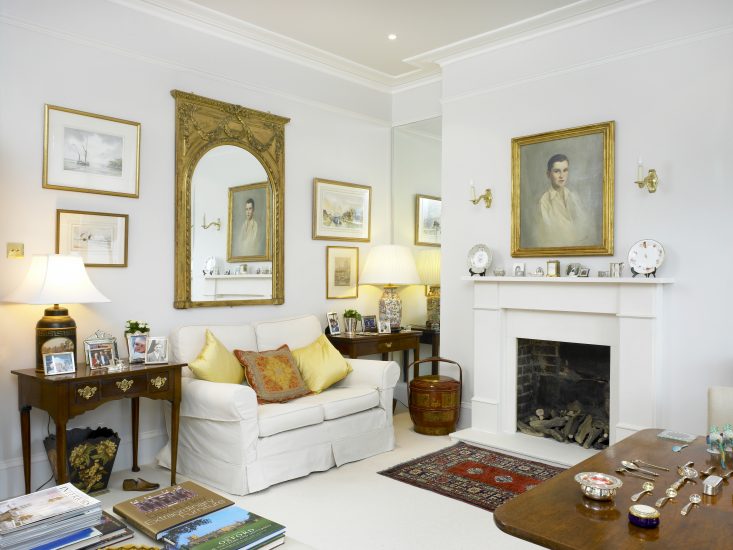Case Studies
VPP200 glass fleece rolls back the years to restore some 19th Century grandeur
Crumbling plasterwork throughout a home in one of Tunbridge Wells’ most historic addresses has been restored to a state of near-perfection thanks to the strengthening quality of a wall lining made of glass
The wall covering was able to create an even finish on all four floors of the Grade-II* listed property, which underwent an extensive renovation recently.
The terraced house, in Calverley Park Crescent, was built in 1831 and designed by noted architect Decimus Burton as part of a semi-circular parade of shops. These were soon converted into private homes and became one of the smartest addresses in town.
Recently, some 170 years or so later, the house was bought by Peter Perry. He embarked on a major refurbishment project featuring painted walls which, naturally, would need to be smooth and even.
However, this was looking unlikely when decorator Craig Wicks, of Borough Green-based C and G Decorators Ltd, peeled off the old wallpaper and revealed the state of the walls below.
“The walls are lath and plaster and they were in a pretty bad condition,” Peter said. “When we took the wallpaper off they were extremely lumpy and needed extensive filling and sanding before anything else could be done.”
The original plan was to cover the walls in traditional lining paper, but Peter was concerned with the prospect of visible joins and lumps and bumps from beneath the paper. Searching for an alternative, he investigated glass wall coverings and opted for VPP200, from The Glass Fabric Company.
VPP200 is made from short strands of glass fibre which are compressed to form a sheet of material and processed into rolls to form a material that is relatively new in the UK, but that is used widely in Europe.
Alongside Glass Fabrics – coverings made from woven glass – the lining’s main advantage is its longevity. Since glass is are tougher than wallpaper and plasterwork, it is more able to withstand knocks and scrapes. This means that with the occasional new coat of paint, the glass wall coverings are good for 20 years.
The material also stays in shape whether wet or dry. Because it does not wick when in contact with water, like paper wall coverings do, individual drops can be butted up together and will stay joined even when the adhesive is dry. This was just what Peter was looking for.
For Craig, the main advantage was apparent even before he got his hands on it – VPP200 is produced in metre-wide rolls, meaning that it would take less time to cover the walls than it would with lining paper.
Then, when Craig started work, more benefits became apparent.
“It doesn’t matter how good you are with paper, they all start pulling at some stage, but this hung very easily and butted together nicely,” he said.
“There was no movement in the paper, so when you butt it up it stays where it is, unlike lining paper.”
VPP200 is also different in that it is the wall that is pasted, not the back of the wall covering. It is also supplied with a layer of paint already applied, which allowed Craig to cut out a stage in the decorating process, although he added a further three coats of vinyl emulsion to create the look that Peter was looking for.
The technology behind the VPP200 will also stand the walls in the good stead for the future. Tests have shown that glass wall coverings are unrivalled when it comes to stabilising crumbling walls and not only will they cover existing cracks or minor imperfections, when used with a suitable adhesive they brace the sub-surface to stop further cracks appearing in the future.
In fact, since it is mineral-based – it comprises quartz sand, dolomite stone, soda and lime – when applied with the correct adhesive it will over a period of time become one with the substrate.
“We noticed that the wall covering bonded with the wall,” said Craig. “In fact, the builder who did the property told us that when you drill holes into it, you’d think it was part of the wall, it was that stable.”
Peter added: “Ours was a major makeover and Craig would have usually put on ordinary lining paper, but I thought the glass wall covering was worth trying.
“It is fantastic. The walls aren’t completely even – it’s an old house, that is never going to happen – but you can’t see the joins at all and the wall covering has done a super job.”
The Glass Fabric Company has supplied wall coverings to commercial and private buildings across the UK, including schools, hospitals & hotels. Its woven glass walls coverings combine their characteristic strength with modern textural design.

